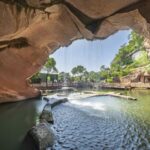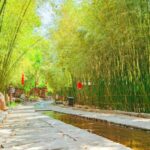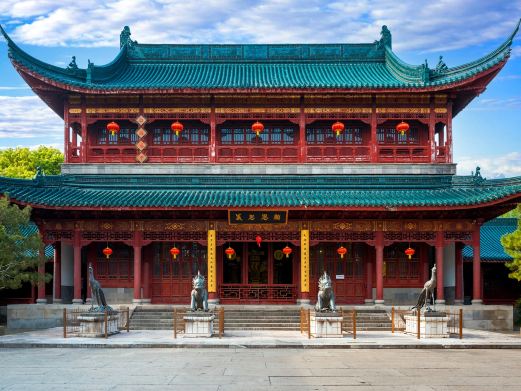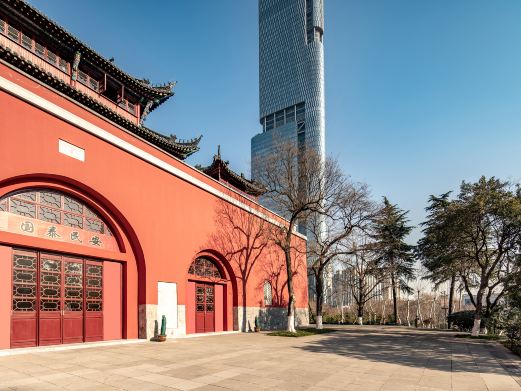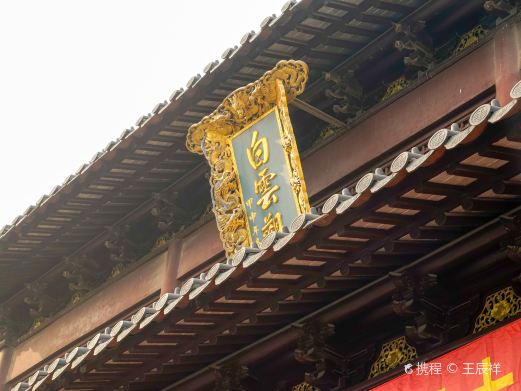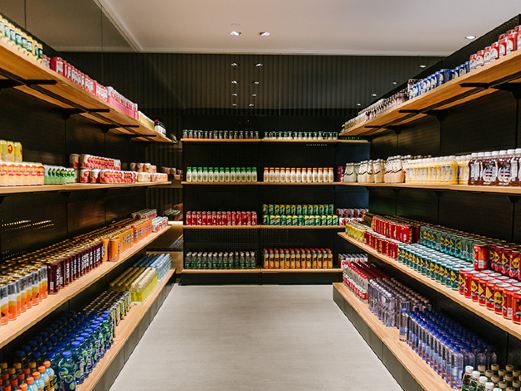Puji Chan Temple, also known as the ‘front temple’, is the main temple dedicated to the worship of Guanyin on the mountain, offering a serene and peaceful atmosphere, making it an ideal place for pilgrimage and prayer. Along with Fayu Temple and Huiji Temple, Puji Chan Temple is one of the three major temples on Mount Putuo and is known for its thriving incense. During holidays, it is often packed with visitors and worshippers.
Upon entering the temple, one passes through a stone archway, next to which stands a stele inscribed with ‘Civil and military officials, soldiers, and civilians must dismount here’. This marks the beginning of the tour of Puji Chan Temple. Beyond the archway lies the Imperial Stele Pavilion, and further ahead is the Haiyin Pond. It serves as the temple’s life-release pond, home to many red carps, and in summer, the pond is adorned with blooming lotus flowers, creating a beautiful sight. There are three bridges over the pond, each with stone benches where one can sit and enjoy the view.

To the east of the pond, between the white clouds and ancient trees, the Yongshou Arch Bridge and its reflection have always been a scene that captures many photographs. In front of the bridge, there is a screen wall inscribed with the five large characters ‘Avalokitesvara Bodhisattva’, where many tourists take pictures. In front of the Haiyin Pond stands the main structure of Puji Chan Temple. Along the central axis, there are buildings such as the Yuantong Bao Hall, the Sutra Pavilion, and the Abbot’s Hall, with bell towers, drum towers, side halls, and guest rooms on both sides of the main hall, arranged in a style reminiscent of Qing Dynasty palaces.

Among them, the Yuantong Bao Hall is the main hall of Puji Chan Temple. ‘Yuantong’ is an epithet of Guanyin Bodhisattva, and the hall houses the statue of Guanyin, equivalent to the Mahavira Hall in ordinary temples. In addition to its vast space and exquisite architecture, the unique feature of the Yuantong Bao Hall is the male effigy of Guanyin and the thirty-two manifestations of Guanyin Bodhisattva, which are said to be the forms in which the Bodhisattva appears when showing miracles. Incense can be requested within the temple, and many people pray and seek blessings here every day.

The Duo Bao Pagoda, located on the southeast side of the temple, is made of Taihu stones and can be viewed from the Haiyin Pond. The Western Paradise scenic area on the west side is a suitable place to watch the sunset, and the hundred-meter-long Baibu Sand beach to the east is a good place for swimming in the summer. The temple is open all year round from 05:30 to 18:00.
2. The entrance ticket to Mount Putuo Scenic Area does not include the temple’s incense flower ticket and the ticket for Luojia Mountain scenic spots.
